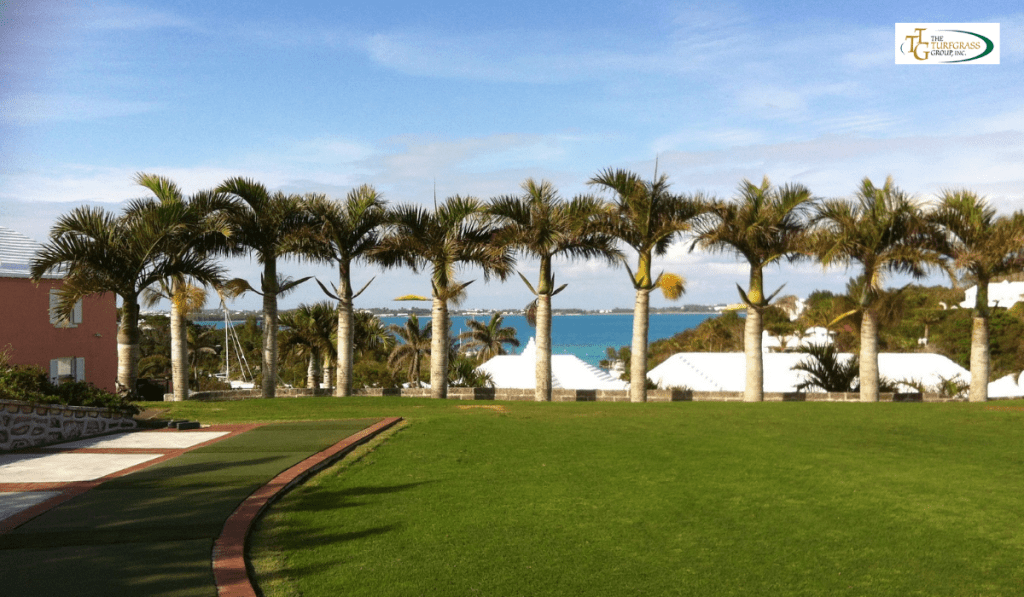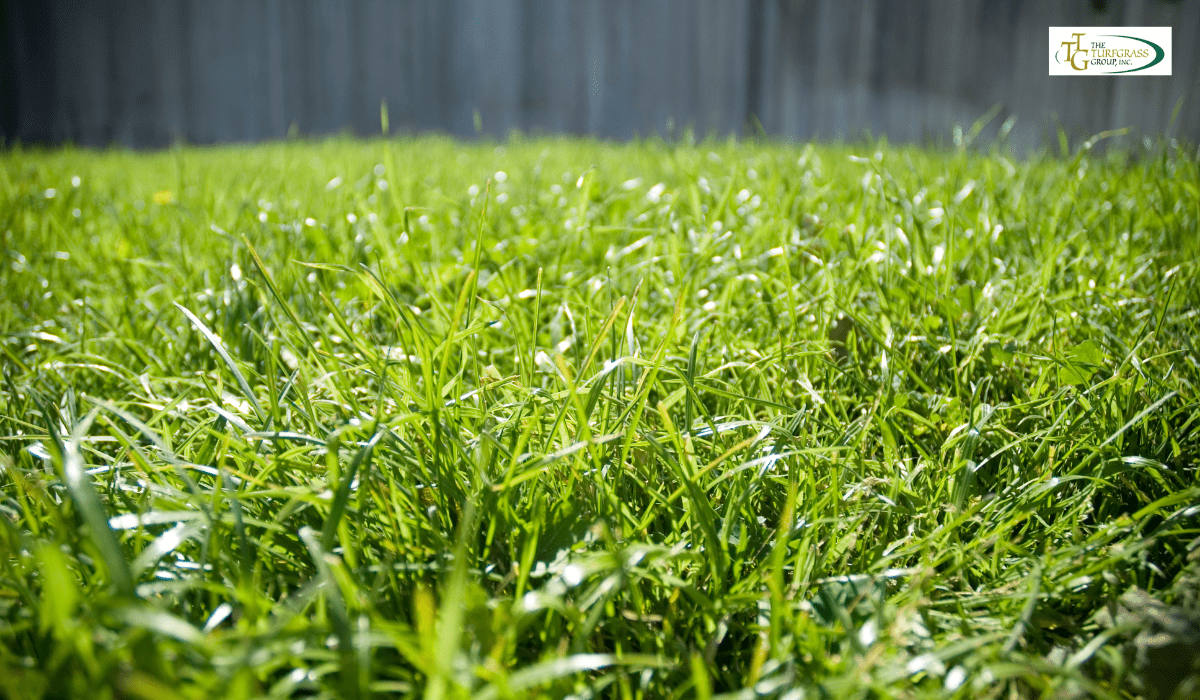
In landscaping and lawn care, the term “drought-tolerant Bermuda grass” has been gaining prominence, and for good reason.
The world is facing unprecedented water scarcity, climate change, and environmental sustainability challenges.
Against this backdrop, finding resilient and eco-friendly solutions for greening our spaces becomes imperative.
Understanding Drought Tolerance
Drought-tolerant Bermuda grass, scientifically known as Cynodon dactylon, has become a game-changer in the quest for water-efficient landscaping.
This resilient grass variety boasts the remarkable ability to thrive in arid conditions, making it an ideal choice for regions with water constraints.
The magic behind its drought resistance lies in its deep root system.
Unlike traditional grass varieties, Bermuda grass sends its roots deep into the soil, tapping into water reservoirs inaccessible to many other plants.
This unique adaptation allows it to endure prolonged periods of drought without sacrificing its lush green appearance.
The Rise of Bermuda Grass in Landscaping
Imagine a suburban neighborhood where lawns are a vibrant sea of green, even during scorching summer months.
This picturesque scene is increasingly becoming a reality as more homeowners, landscapers, and communities embrace the benefits of drought-tolerant Bermuda grass.
Economic and Environmental Impact
One of the primary reasons for the surge in popularity is the economic and environmental impact of using this grass variety.
As water prices soar and conservation becomes a priority, opting for Bermuda grass becomes cost-effective and sustainable.
Reduced water consumption translates into lower utility bills, contributing to individual savings and community-wide resource conservation.
Cultivating Drought-Tolerant Bermuda Grass
Cultivating Bermuda grass involves more than just planting seeds and hoping for the best. To harness its full potential, here are key considerations:

Soil Preparation
Bermuda grass thrives in well-drained soil. Before planting, ensure proper soil preparation by addressing compaction and poor drainage.
Amending the soil with organic matter enhances its texture and nutrient content, providing an optimal environment for Bermuda grass to establish itself.
Watering Practices
While Bermuda grass is drought-tolerant, proper watering during its establishment phase is crucial.
Water deeply but infrequently to encourage the development of deep roots.
Once established, the grass requires less water, making it a sustainable choice for the long term.
Mowing Techniques
Proper mowing is essential for maintaining a healthy Bermuda grass lawn. Keep the grass at an optimal height, typically 1.5 to 2 inches.
Regular mowing enhances the visual appeal and promotes lateral growth, resulting in a dense and resilient turf.
Challenges and Considerations
Despite its many virtues, drought-tolerant Bermuda grass is not without its challenges. Understanding these aspects is essential for successful cultivation.
Invasive Nature
Bermuda grass’s aggressive growth can be a double-edged sword.
While it quickly establishes a dense turf, it can also invade flower beds and other landscaping features.
Regular monitoring and strategic containment measures are necessary to prevent unintended encroachment.
Winter Dormancy
In colder climates, Bermuda grass enters a period of dormancy during the winter months, turning brown.
While this is a natural response to temperature changes, it may affect the grass’s visual appeal.
Planting winter rye as an overseed can provide a green cover during the dormant period.
The Future of Sustainable Landscaping
As we navigate a future marked by environmental concerns and changing climate patterns, the role of drought-tolerant Bermuda grass in sustainable landscaping cannot be overstated.
Its resilience, water efficiency, and positive environmental impact position it as a key player in the quest for greener and more sustainable urban spaces.
Conclusion
Transform your landscape with the resilience of drought-tolerant Bermuda grass!
Explore expert insights and guidance at The Turfgrass Group. Uncover the secrets of water-efficient landscaping, optimal growth considerations, and effective management of its invasive nature.
Embrace sustainability and reshape lawns, golf courses, and public parks. Elevate your outdoor spaces with The Turfgrass Group’s expertise for a greener, more resilient future.
Visit The Turfgrass Group and discover the transformative potential of Bermuda grass today!
FAQs
What makes Bermuda grass drought-tolerant?
Bermuda grass, scientifically known as Cynodon dactylon, exhibits drought tolerance due to its deep root system. Unlike traditional grass varieties, Bermuda grass roots penetrate deep into the soil, accessing water reservoirs many other plants cannot reach. This unique adaptation allows it to thrive in arid conditions while maintaining its lush green appearance.
How does cultivating Bermuda grass contribute to water conservation?
Cultivating Bermuda grass contributes to water conservation by reducing water consumption. The grass requires less water once established, and its deep roots enable it to endure prolonged periods of drought without sacrificing its vibrant appearance. It translates to lower utility bills for individuals and promotes community-wide resource conservation.
What are the key considerations for cultivating drought-tolerant Bermuda grass?
To harness the full potential of Bermuda grass, consider proper soil preparation with well-drained soil and amending it with organic matter. During the establishment phase, practice deep and infrequent watering to encourage deep-root development. Additionally, maintain optimal mowing techniques to promote a dense and resilient turf.
How can one address the invasive nature of Bermuda grass?
The regional monitoring and strategic containment measures can manage the aggressive growth of Bermuda grass. Careful planning and landscape design can help prevent unintended encroachment into flower beds and other landscaping features.
What happens to Bermuda grass during winter in colder climates?
In colder climates, Bermuda grass enters a period of dormancy during winter, turning brown. While this is a natural response to temperature changes, it may affect the grass’s visual appeal. Planting winter rye as an overseed can provide a green cover during the dormant period, maintaining a pleasing aesthetic.
Can Bermuda grass be used in outdoor spaces beyond residential lawns?
Absolutely! Drought-tolerant Bermuda grass is versatile and can be used in various outdoor spaces such as golf courses, public parks, and commercial landscapes. Its resilience, water efficiency, and positive environmental impact make it suitable for cultivating sustainable and visually appealing green spaces.